Farmers Markets have become a staple of Main Streets throughout the country. It’s a wonderful event that brings people from all over the area into the downtown, while at the same time highlighting local foods and growers.
When I came to Main Street our vendor manual was a couple of pages of what appeared to be hastily-written copy that was more about excluding other vendors than it was about what our market should be. We went about the job of revamping our handbook, which was no easy task.
We wanted the handbook to be a guide for how the market should operate. We wanted to make sure we addressed important things such as booth space, fees, and more. We also wanted this to provide some guidance for new or prospective vendors to the market. We did our research, found some other markets that had good guide that we could borrow from, and we put together a handbook that we were proud of.
The handbook evolved over time, but a few things really stood out to us that made managing and promoting the market a lot easier. The first was our vendor application. This was always the last few pages of the handbook, but really provided a great tool for managing the market. We had all the information that we needed about the vendor in one two-sided form. It included all the legal things needed such as indemnification, talent release and more. The second page became a wonderful tool for promoting the market because it gave us an idea of what produce each vendor was growing so we could plan promotions (within a few weeks), knowing we were going to have strawberries, peaches, corn, etc.
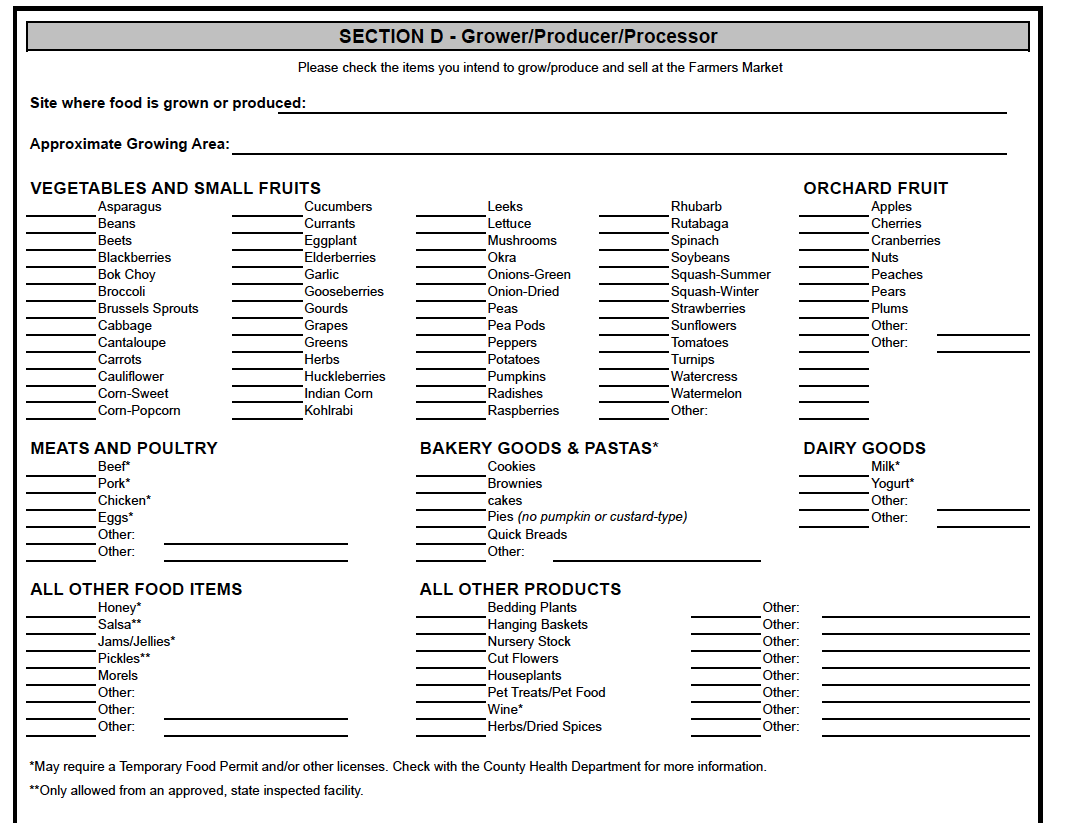
The market handbook and application was a wonderful tool for us to ensure everyone was on the same page and had all the important information necessary for the market to be successful, and it was!
As our market continued to grow, and technology evolved, our market began to get into SNAP/EBT and Credit Card purchases. We needed to develop a way to make our manager’s job easier in keeping track of all the paperwork, so we created a daily reporting form for their use. Here’s how it works:
The manager enters the date at the top, and then enter the number of total vendors and the amount collected from them. Pre-paid, or annual vendors they will only collect from their first market. We also asked our vendors to compile a list of total number of sales each day and total dollars sold. This helps us determine effectiveness of the market, and is great for grant reporting, etc.
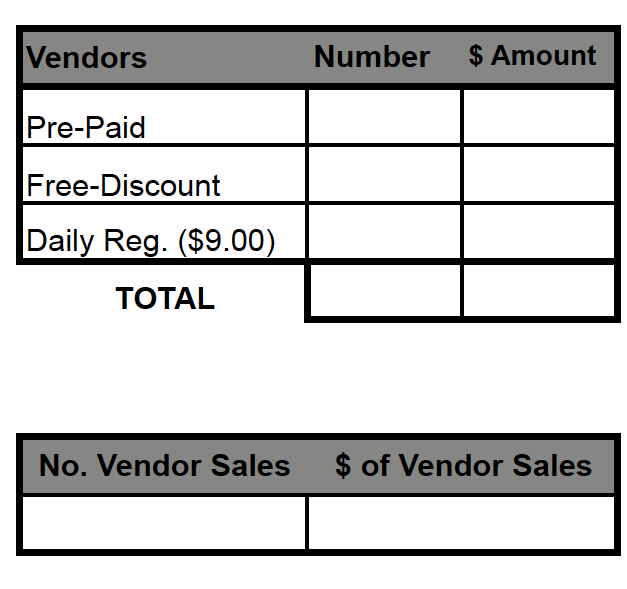
The next column deals with the purchases from the customers. If someone comes to our market managers and purchases market bucks via credit card, they receive a red “coin”, which is a wooden token than can be redeemed dollar-for-dollar from any vendor. If they are a Link/SNAP/EBT customer, they receive a green coin than can be redeemed dollar-for-dollar from any approved vendor (must comply with SNAP/EBT guidelines, etc). As someone makes one of these purchases from the manager, they put the dollar amount in the box and total it at the end of each day.
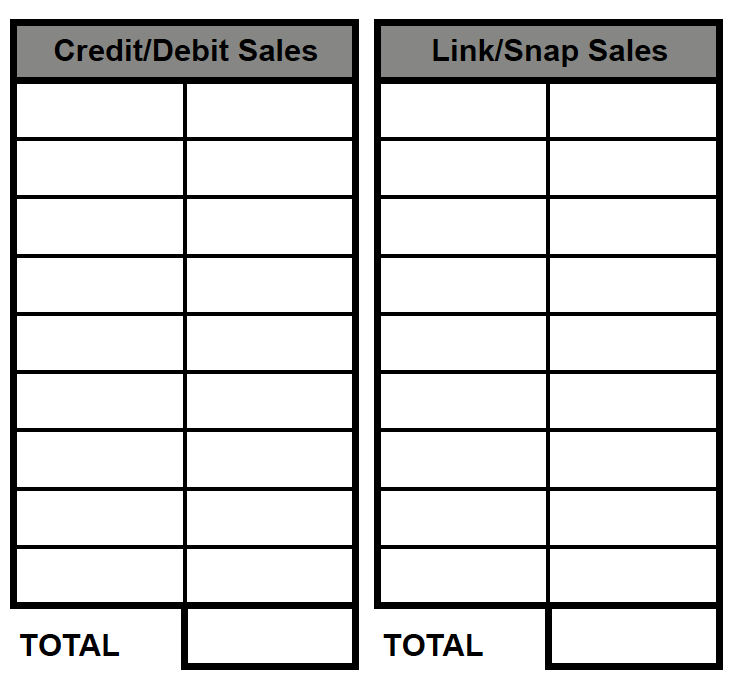
In the final column, the market manager then records how many tokens are redeemed by the vendors for that day (paid from the pettycash on hand). They then complete the daily cashflow. They add the vendor fees collected to the starting cash, subtract the tokens redeemed, and are left with the ending cash.
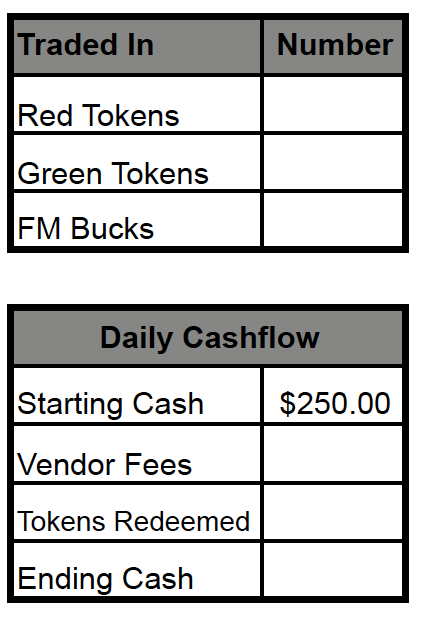
Finally, the manager records each vendor in attendance, and can add any notes (i.e. things the Executive Director should be aware of, etc). They sign the form and turn it in along with all the money for bookkeeping.
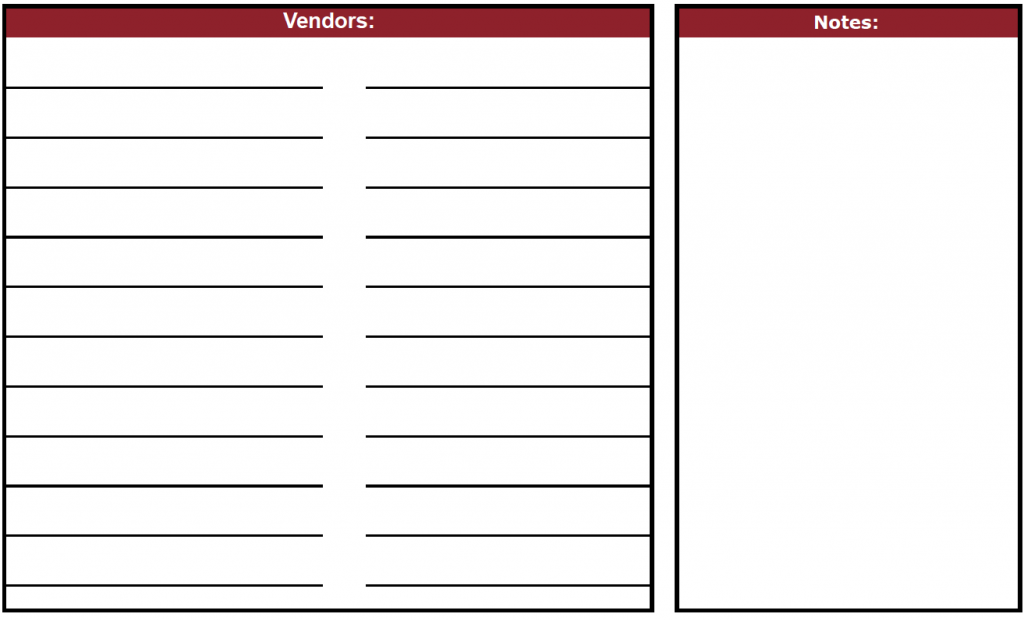
This keeps things running smoothly and provides some good metrics for each market of the season, allowing the organization to track effectiveness of campaigns, seasons, etc.
Complete our form on the right and you will have access to the Farmers Market Handbook, the Application, and the Daily reporting form. It is important to note that you will want to update these with your state/local regulations. We are happy to provide you with these Farmers Market tools to help you better manage your market.
